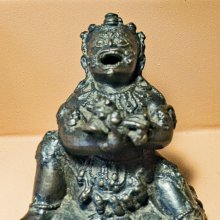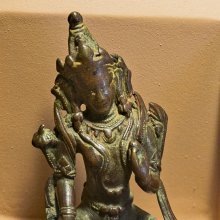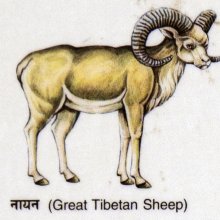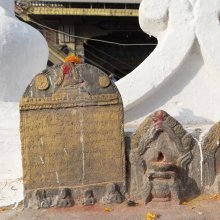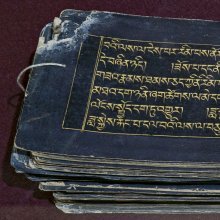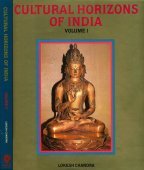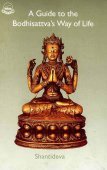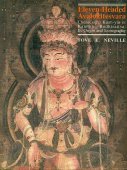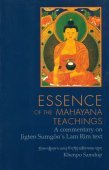Tibetan: 1 definition
Introduction:
Tibetan means something in the history of ancient India. If you want to know the exact meaning, history, etymology or English translation of this term then check out the descriptions on this page. Add your comment or reference to a book if you want to contribute to this summary article.
Images (photo gallery)
(+39 more images available)
India history and geography
Source: academia.edu: The Chronological History of Tibetan BuddhismTibetans were generally referred to as Bhotas or Bhauttas in Sanskrit since post-Buddhist period. There is no reference of Bhotas or Bhauttas in Ramayana and Mahabharata. Ancient Tibet was called as Bod or Bod-yul.

The history of India traces the identification of countries, villages, towns and other regions of India, as well as mythology, zoology, royal dynasties, rulers, tribes, local festivities and traditions and regional languages. Ancient India enjoyed religious freedom and encourages the path of Dharma, a concept common to Buddhism, Hinduism, and Jainism.
See also (Relevant definitions)
Starts with: Tibetan Buddhism, Tibetan sea buckthorn.
Full-text (+4598): Tibetan Buddhism, Aryadeva, Kesa, Pha-gol, Narendradeva, Pha-khol, Shodashashunyata, Atisha, Shantarakshita, Dalai Lama, Avanta, Candali, Garab Dorje, Roman, Shmashru, Cilla, Kalapa, Rahula, Ancient Tibet, Samlambha.
Relevant text
Search found 94 books and stories containing Tibetan; (plurals include: Tibetans). You can also click to the full overview containing English textual excerpts. Below are direct links for the most relevant articles:
Tibet (Myth, Religion and History) (by Tsewang Gyalpo Arya)
1. Bodhisattva Monkey and Rock-ogress < [Chapter 1 - Early Tibetan Origin Myth]
5. Scholarly Debate and the Revelation < [Chapter 1 - Early Tibetan Origin Myth]
9. Conclusion < [Chapter 1 - Early Tibetan Origin Myth]
The Great Buddhist Emperors of Asia (by Shibani Dutta)
Chapter 3 - King Sron Tsan Gampo of Tibet (617 A.C.–698 A.C.)
A Blessed Pilgrimage (by Dr. Yutang Lin)
Part 12 - The Site Of Buddha's First Sermon
Part 7 - The Site Of Buddha's Enlightenment
Bodhisattvacharyavatara (by Andreas Kretschmar)
Text Section 150 < [Khenpo Chöga’s Oral Explanations]
Text Section 41 < [Khenpo Chöga’s Oral Explanations]
Text Section 284 / Stanza 27 < [Khenpo Chöga’s Oral Explanations]
The Way of the White Clouds (by Anāgarika Lāma Govinda)
Chapter 40 - Magic as Method and Practical Knowledge < [Part 3 - Death and Rebirth]
Chapter 33 - Interlude at dungkar gompa < [Part 3 - Death and Rebirth]
Chapter 35 - Lengthening Shadows < [Part 3 - Death and Rebirth]
Maha Prajnaparamita Sastra (by Gelongma Karma Migme Chödrön)
Appendix 7 - The expression of driving out a peg by means of a counter-peg < [Chapter XXXIX - The Ten Powers of the Buddha according to the Abhidharma]
Understanding dharmatā: Preliminary note < [Part 2 - Understanding dharmatā and its synonyms]
Appendix 9 - The first Madhyamika authors (Nāgārjuna, Āryadeva, Rāhulabhadra) < [Chapter XXXVI - The eight recollections (anusmṛti or anussati)]
Related products
(+7 more products available)

